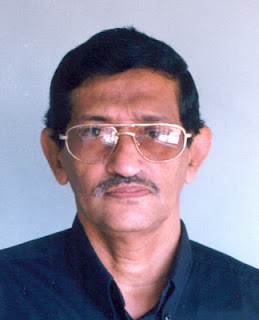Sukumar
From
early childhood had an aptitude towards humour. First cartoon appeared
in VIKATAN magazine in 1950. Since then he draw cartoons for Malayali
daily and Kaumudhi weekly. Got initiated into political cartooning under
the guidance of (late) K.S. Pillai, famous editorial cartoonist of the
’50s and ’60s and pioneer of political cartooning in Kerala..
After
graduation, Shri Sukumar studied drawing and painting academically.
Joined Government service and worked in the state police department for
30 years from 1957 to retire in 1987as Administrative Assistant. While
in service, he drew many cartoons in an array of Malayalam periodicals.
An exponent of whacky humor in writing as well, he has so far published
35 books under different genres. Served as Chairman and Secretary of
Kerala Cartoon Academy. Received Fellowship from Kerala Cartoon Academy
in 1998. He is also the recipient of the Kerala Sahithya Academy award
for Humour literature 1996.













